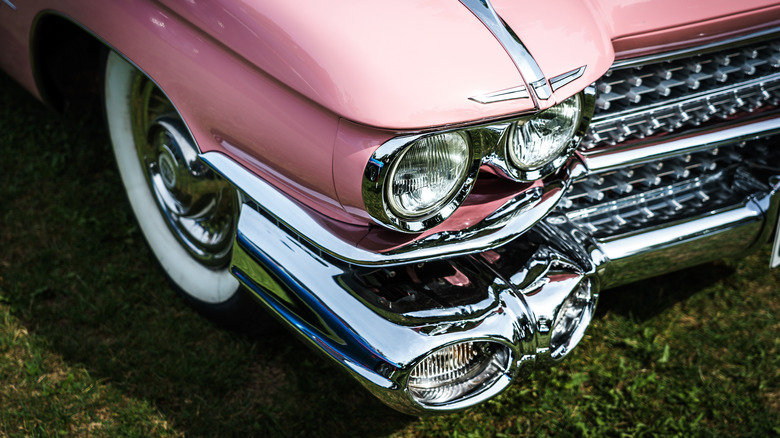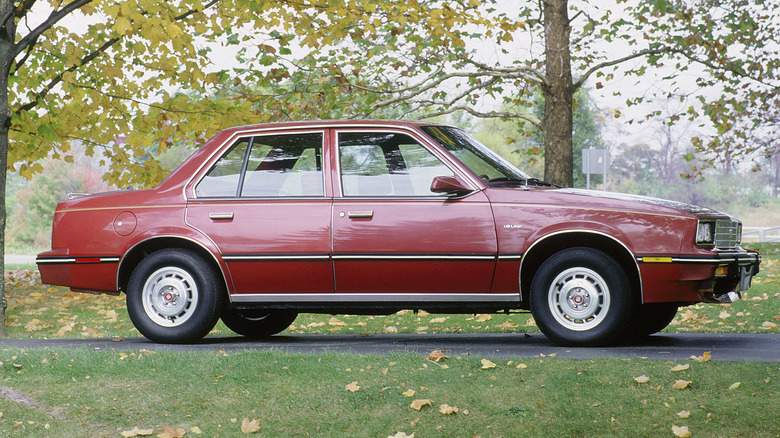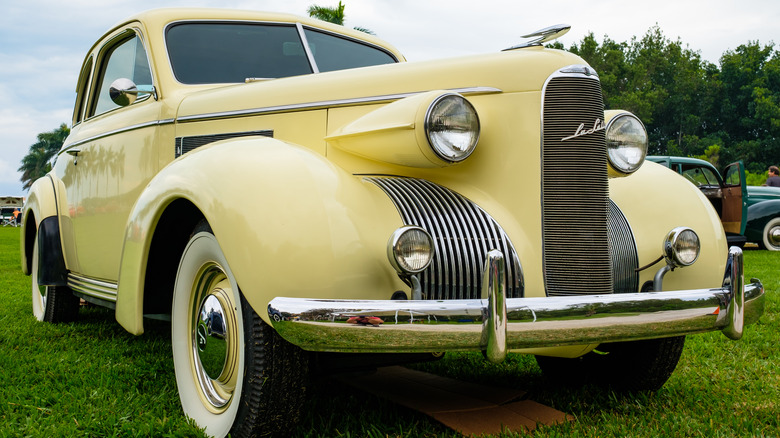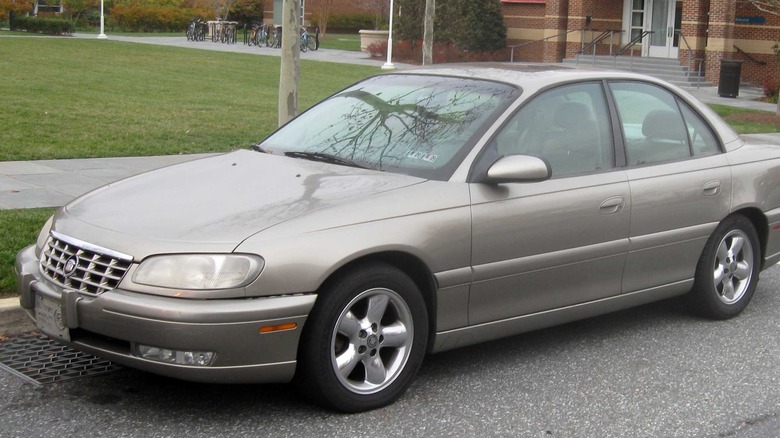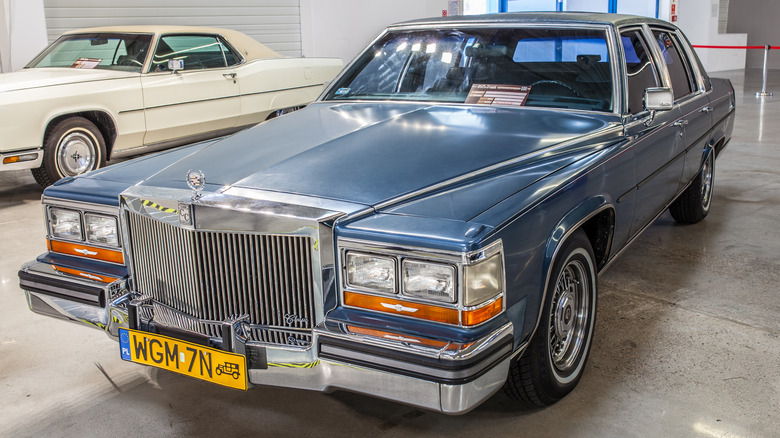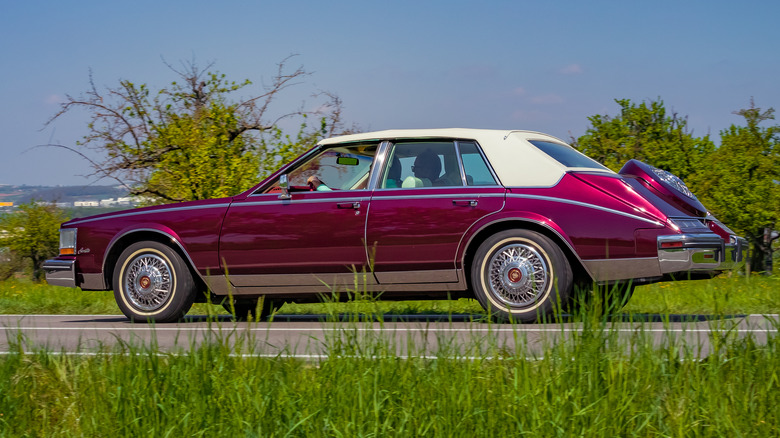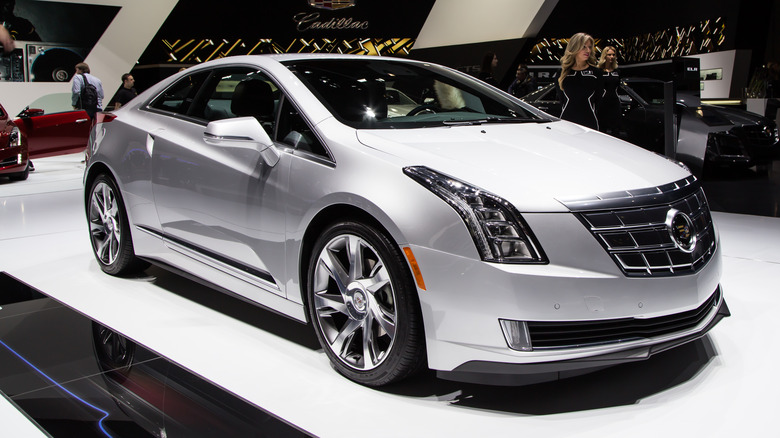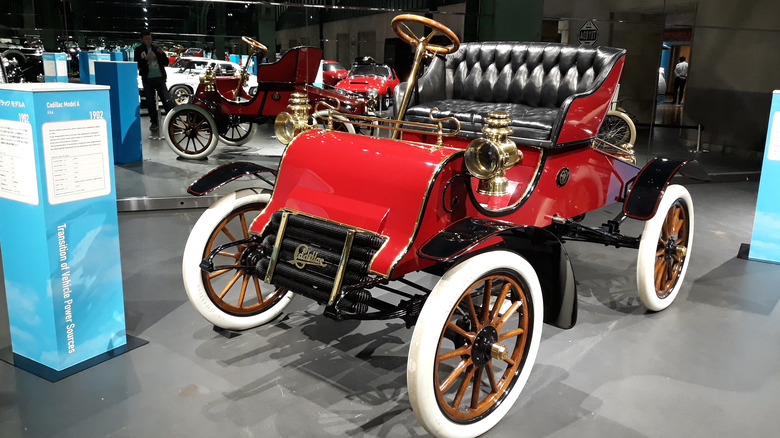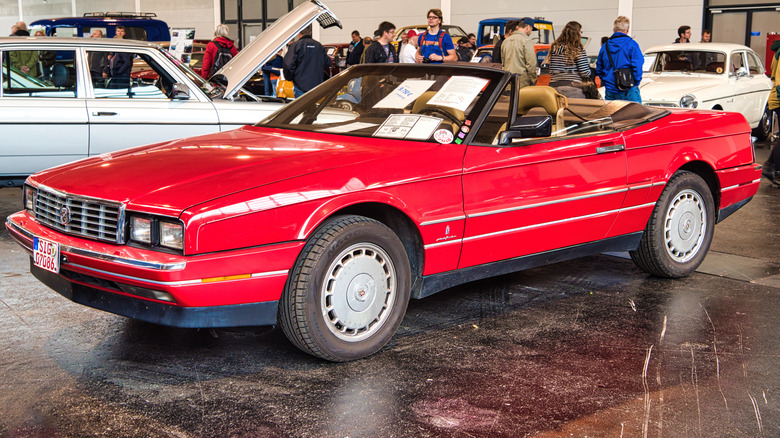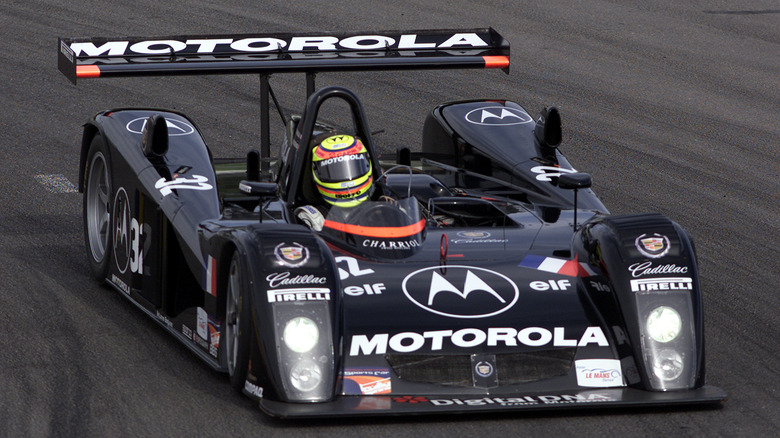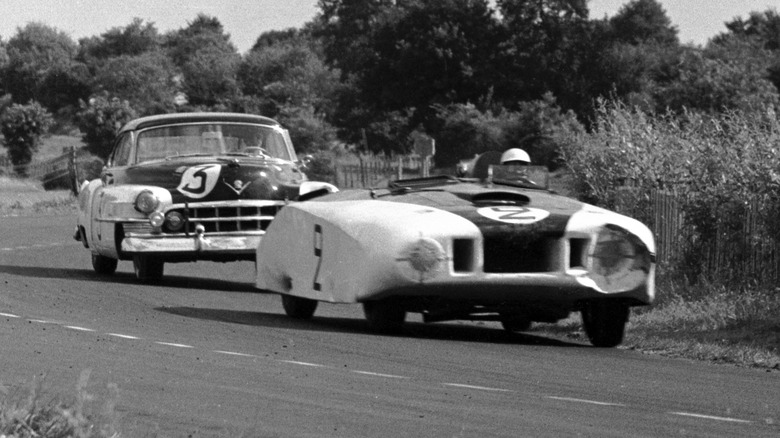10 Cadillacs That Everyone Forgot Existed
Cadillac has been making cars since 1902; it is one of the most recognizable companies on the planet and is known for making distinctive luxury cars with a uniquely American flair. The automaker had sold millions of cars over the years with many of them leaving an indelible mark on the psyche. From the Eldorado to the giant Fleetwood and the more modern CTS or Escalade, Cadillac looms large in the American auto market.
Despite the number of beloved vehicles from the Detroit company, there are some that may have slipped through the cracks. A few ill-conceived ideas that were poorly executed line the halls of history along with some that simply exited the stage with little fanfare, including a few racers that Cadillac is not well known for. Pontiac and Chevrolet have mostly dominated the track as representatives of General Motors. Looking through the archives of its flops, misses, and unremarkable Cadillac models, there are 10 of them forgotten by everyone.
Cimarron by Cadillac
General Motors long consisted of multiple car brands that catered to different segments of the market. The brands had shared parts and platforms for decades, often with a single car being made in different versions for Oldsmobile or Pontiac or Chevrolet, and, often, all of them. Cadillac was generally not part of the platform sharing and instead produced unique cars for luxury buyers.
The Cimarron was one of the exceptions as GM tried to compete with smaller German luxury cars by adapting the J-Body shared by the other GM divisions as the Chevrolet Cavalier, Buick Skylark, and Pontiac Sunbird. While it had been badged with Cadillac icons and given some upscale treatment, there was no mistaking what the car was underneath: a small, underpowered economy model put together poorly with cheap parts and figurative chewing gum. Even at its inception, Cadillac hardly embraced the endeavor as it wasn't even an official Cadillac model, being branded "Cimarron by Cadillac." Motorweek's retro review gave the car fair marks for some categories but noted that there was no escaping its economy underpinnings.
LaSalle
Just because a car has slipped into the memory hole does not mean it is necessarily a bad car. Sometimes good ideas simply fall out of favor or are left to the history books. By the 1920s, GM was already a huge company with several brands, but its management saw fit to add a couple of marques to fill between the price points of existing brands. LaSalle was born of this endeavor to be the baby Cadillac. The LaSalle was often a smaller car than the Cadillac but shared many components and offered similar luxury appointments, according to Motorpedia.
LaSalle was conceived by GM president Alfred Sloan and the chief designer, the legendary Harley Earl. It was considered a companion marque to be sold alongside Cadillacs, but at a lower price point. LaSalle existed from 1927 to 1940 and generated many stylish and desirable automobiles during its time. Most of its existence was during the Depression and continued to exist in that period to keep Cadillac profitable at a time when car sales fell across the board. Today a nice LaSalle can be found in classic car listings for reasonable prices that are a fraction of what classic Cadillacs can fetch. Perhaps the current pricing is the result of not having the same cache and collective memory of the Cadillac name, much like when they were new.
Catera
It seems a common refrain in the American auto industry since the late 1970s is the attempt to come up with cars to compete with European imports. This is especially true of Cadillac, as it's always aiming to fend off the Germans with their sublime luxury sedans from BMW and Mercedes. For the 1999 model year, Cadillac introduced the Catera, a mid-sized sedan with distinctive Euro styling.
Cadillac tried so hard to introduce a car to compete with its European counterparts that it imported a car from Europe. The Catera is not just based on a European GM sedan, the Opel/Vauxhall Omega — it is the same car. Just as GM badge-engineered Toyota and Suzuki cars to be sold as Chevrolets and Pontiacs, Cadillac did the same with the Catera and it just did not work. It should be no surprise that the Cimarron comes up almost immediately in the Car and Driver review in 2000. While there is some praise for the car in the review, overall is a tone of modest disappointment. The Catera only lasted a few years and after reading just a few of the user reviews at Edmunds, it looks as if there's a good reason people choose not to remember it.
V8-6-4
The oil crisis of the 1970s left all the American automakers scrambling to produce fuel-efficient offerings for consumers who now demanded them. Ford and Chevrolet responded with smaller 4-cylinder cars, but that was not an option for a luxury maker like Cadillac, which was long accustomed to making large and comfortable machines at premium price points. For Cadillac management, technology was going to be the fuel-saver savior, until it wasn't.
By 1980, advances in computers and auto engineering meant that electronic fuel injection was no longer a thing of the future and American manufacturers were already installing it on production vehicles, with Cadillac pioneering the technology on the Seville. According to Driving Line, the 6.0-liter L62 V8 engine equipped with a V8-6-4 variable displacement system was standard throughout the range starting in 1981. Codeveloped with Bendix, the V8-6-4 used a throttle body EFI combined with solenoids attached to rockers on the engine to deactivate cylinders, effectively cutting the engine cylinders from eight to six to four, depending on engine load and throttle position.
It was a system that looked great on paper, but Hemmings tells us the computer system was not up to the task. It was supposed to be a seamless changeover from partial to full cylinder activation, yet that didn't pan out in the real world. The system proved to be so troublesome that nearly all of the cylinder deactivation systems were deactivated altogether within a few years and it was soon dropped from all Cadillacs forever.
Seville Diesel
The fuel economy woes of the 1970s are well documented and of the many ways automakers attempted to quell demand for efficient cars was with diesel power. GM's Oldsmobile developed a diesel 5.7-liter V8 that would be adopted across the divisions, including Cadillac. It was offered in the Seville as an option, but not for long.
The problems with the diesel were many. Its first apparent drawbacks were just in the inherent nature of how a diesel engine operates. They were noisy and smoky. Few people wanted to pay extra for a luxury car just to be bombarded with a brash, loud engine and trailed by a black cloud of carbon-heavy soot. According to Hemmings, Cadillac added 75 pounds of sound-deadening material and it still caused a racket. The discomforts of the diesel were just the beginning, and the engine design was flawed from the start. Cars started blowing head gaskets soon after being sold and the chains on injector pumps wore out under normal operation. Early models lacked a water separator and rust appeared inside the engine itself.
The GM experiment with diesel soured the public so badly on the fuel choice that it would be decades before another American diesel appeared. Germans continued to sell them in the interim but only in small numbers and a fraction of the amount sold in Europe. Only in 2021 would Cadillac feel bold enough to offer another diesel-powered car.
ELR
With the upcoming Lyriq model, all eyes are on Cadillac as it brings us its first EV — though keep in mind the Lyriq will be the maker's first fully electric car. The first electric Cadillac was the ELR, which came out in 2014, and it was a plug-in hybrid sharing its drivetrain with the Chevrolet Volt.
In our review of it before it went on sale, we found the ELR to be a well-sorted luxury coupe. It has the refinement expected of a modern Cadillac, and its drivetrain was more than adequate, if not a bit novel. GM liked for it to be thought of as an EREV, or extended-range electric vehicle, as it is not a true hybrid. The gas engine is not connected to the wheels in any way and only exists to create electricity when the batteries are depleted. For short drives, the ELR can go completely on electricity.
The downfall of the ELR may have been its price. At $75,000 in 2014, it was expensive. People generally do not like to spend large amounts of money on unproven technology in an unproven car model. The ELR only sold about 3,000 units in its two-year run, 2014 and 2016; there was no 2015 model. With so few on the road, it is easy to see why so few people remember this model existed. Hopefully, for Cadillac's sake, it will have better luck with the Lyriq.
Model A Delivery
Most people think the Escalade is the first-ever truck made by Cadillac, but they are wrong. It is easy to forget how far back the history of Cadillac goes as it was one of the first American car companies to make and sell cars. In the early days of the auto industry, things were very different and everything was built by hand. Cars were built to order and early makers built chassis on which coachbuilders could affix a body.
While Cadillac offered its first vehicle as a runabout, which is basically just an open car with a bench seat; many units were customized, such as this one offered by Sotheby's that sold for $123,200. It is easy to see the car is not much more than a box on top of the chassis, but it is a proper truck for its day, and that means the Escalade is not the first. Total production of the first Cadillacs was about 2,500, which means the few that are left are known mostly by collectors (via Concept Carz).
Allante
In another chapter of Cadillac's ongoing attempt to keep up with the Germans, the Allante coupe was conceived of as a premium coupe to build the cache of the brand and steal customers from the automaker's European rivals. The Allante was a testbed for some new and upcoming technologies and was a sort of experiment in car building, as well.
For the Allante, Cadillac turned to Europe for not only the styling but also part of the manufacturing. Storied styling house Pininfarina was tapped to design the style of the car and also to build the bodies. In an astonishing exercise in manufacturing waste, Pininfarina constructed the bodies of the Allante and shipped them to Detroit via specially-equipped Boeing 747s. While this sped up the production of the multi-continent build, flying entire car bodies across the ocean added significantly to the price. The first Allante went on sale in 1987 for a staggering $54,700, which was the equivalent of about $121,336 in 2018 dollars, according to Hagerty.
Hemmings counts some of the reasons the Allante is no longer, if it ever was, held in high regard, including an underpowered 170-horsepower engine, leaking head gaskets, faulty brakes, and poor resale value. The Allante managed to survive a six-year model run, even introducing the Cadillac Northstar engine in its final 1993 model. The Allante now garners a cult following with dedicated owners who will tell you it is one of the finest cars ever made. Beyond those select die-hards, the Allante generates little fanfare today.
Cadillac Northstar LMP
Cadillac is not well known for motorsports, and it might seem ridiculous to attempt to race one of the automaker's luxury land barges made for most of the 20th century — a 19-foot Fleetwood weighing around 5,000 pounds is not likely to see any checkered flags, after all. That said, Cadillacs on the race track are not unheard of, especially since the move toward a sportier image appealing to younger buyers happened in the 1990s.
The Cadillac Northstar LMP is a purpose-built race car that uses a twin-turbo version of its Northstar V8 to power open-top cars meant to compete in endurance races, such as Le Mans. Road and Track reports that the LMP saw some strong finishes, but winning races remained elusive. With wins failing to add up and resources continuing to dwindle, the program was scrapped and funds for the LMP were diverted to GM's Corvette racing program.
Cadillac Series 61 LeMans Le Monstre
A half-century before the LMP program, Cadillac fielded another Le Mans racer — in fact, it was actually a pair of racers based on the Series 61 model. One of the cars was a showroom-ready Cadillac with a bit of work to tweak the engine; the other had been re-bodied in an elaborate custom job that earned it the nickname "Le Monstre."
The car with the stock body, according to The Drive, was completely stock except for its extra gas tank, twin carburetor manifold, and air scoops for the drum brakes; the suspension and everything else were the same as they would be at the dealership. The modified car was also mostly stock, but Cadillac provided a five-carburetor intake manifold. The custom bodywork was done in aluminum, but still barely managed to get the car under two tons. Despite their size and weight, the cars finished in 10th and 11th place, far from a win but still respectable for a couple of large luxury cars on the track. Had they won, it would have been bigger news. Instead, it is an interesting footnote to the Cadillac story that feeds into the racing program the company manages today.
